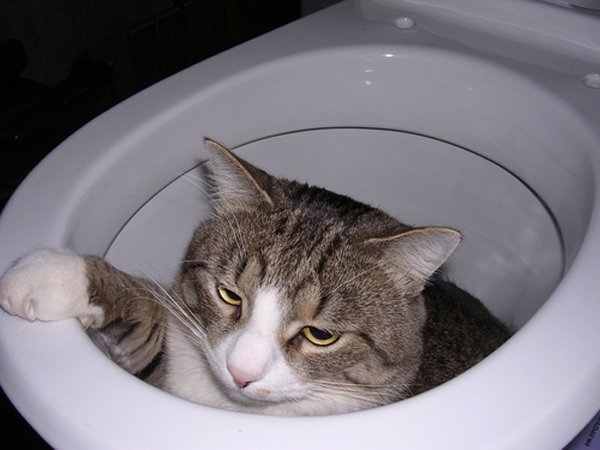Why Flushing Cat Poop Down Your Toilet Isn't a Good Idea - Advice for Proper Handling
Why Flushing Cat Poop Down Your Toilet Isn't a Good Idea - Advice for Proper Handling
Blog Article
Almost everyone may have their own unique rationale in relation to Can You Flush Cat Poo or Litter Down the Toilet?.

Introduction
As pet cat proprietors, it's necessary to be mindful of how we deal with our feline pals' waste. While it might appear convenient to purge pet cat poop down the bathroom, this technique can have damaging consequences for both the atmosphere and human wellness.
Environmental Impact
Purging pet cat poop introduces damaging virus and parasites into the supply of water, positioning a substantial threat to marine ecological communities. These impurities can adversely influence aquatic life and compromise water quality.
Wellness Risks
Along with ecological issues, purging pet cat waste can also posture wellness dangers to humans. Pet cat feces might have Toxoplasma gondii, a bloodsucker that can create toxoplasmosis-- a potentially serious health problem, particularly for expecting ladies and individuals with weakened immune systems.
Alternatives to Flushing
Fortunately, there are much safer and extra accountable means to get rid of pet cat poop. Take into consideration the complying with options:
1. Scoop and Dispose in Trash
One of the most typical approach of disposing of cat poop is to scoop it into a naturally degradable bag and throw it in the garbage. Be sure to use a devoted litter scoop and take care of the waste without delay.
2. Usage Biodegradable Litter
Select eco-friendly pet cat litter made from materials such as corn or wheat. These clutters are environmentally friendly and can be safely disposed of in the trash.
3. Hide in the Yard
If you have a yard, think about hiding cat waste in a marked location far from vegetable gardens and water resources. Be sure to dig deep sufficient to avoid contamination of groundwater.
4. Mount a Pet Waste Disposal System
Invest in a pet waste disposal system particularly created for cat waste. These systems make use of enzymes to break down the waste, reducing odor and environmental effect.
Conclusion
Responsible pet possession extends past providing food and sanctuary-- it also includes correct waste management. By refraining from flushing pet cat poop down the toilet and selecting different disposal approaches, we can minimize our environmental footprint and protect human wellness.
Why Can’t I Flush Cat Poop?
It Spreads a Parasite
Cats are frequently infected with a parasite called toxoplasma gondii. The parasite causes an infection called toxoplasmosis. It is usually harmless to cats. The parasite only uses cat poop as a host for its eggs. Otherwise, the cat’s immune system usually keeps the infection at low enough levels to maintain its own health. But it does not stop the develop of eggs. These eggs are tiny and surprisingly tough. They may survive for a year before they begin to grow. But that’s the problem.
Our wastewater system is not designed to deal with toxoplasmosis eggs. Instead, most eggs will flush from your toilet into sewers and wastewater management plants. After the sewage is treated for many other harmful things in it, it is typically released into local rivers, lakes, or oceans. Here, the toxoplasmosis eggs can find new hosts, including starfish, crabs, otters, and many other wildlife. For many, this is a significant risk to their health. Toxoplasmosis can also end up infecting water sources that are important for agriculture, which means our deer, pigs, and sheep can get infected too.
Is There Risk to Humans?
There can be a risk to human life from flushing cat poop down the toilet. If you do so, the parasites from your cat’s poop can end up in shellfish, game animals, or livestock. If this meat is then served raw or undercooked, the people who eat it can get sick.
In fact, according to the CDC, 40 million people in the United States are infected with toxoplasma gondii. They get it from exposure to infected seafood, or from some kind of cat poop contamination, like drinking from a stream that is contaminated or touching anything that has come into contact with cat poop. That includes just cleaning a cat litter box.
Most people who get infected with these parasites will not develop any symptoms. However, for pregnant women or for those with compromised immune systems, the parasite can cause severe health problems.
How to Handle Cat Poop
The best way to handle cat poop is actually to clean the box more often. The eggs that the parasite sheds will not become active until one to five days after the cat poops. That means that if you clean daily, you’re much less likely to come into direct contact with infectious eggs.
That said, always dispose of cat poop in the garbage and not down the toilet. Wash your hands before and after you clean the litter box, and bring the bag of poop right outside to your garbage bins.
https://trenchlesssolutionsusa.com/why-cant-i-flush-cat-poop/

I ran across that post about Can You Flush Cat Poo or Litter Down the Toilet? while doing a lookup on the web. Make sure you take the time to share this page if you enjoyed it. Thanks a lot for your time spent reading it.
Go Deal Report this page